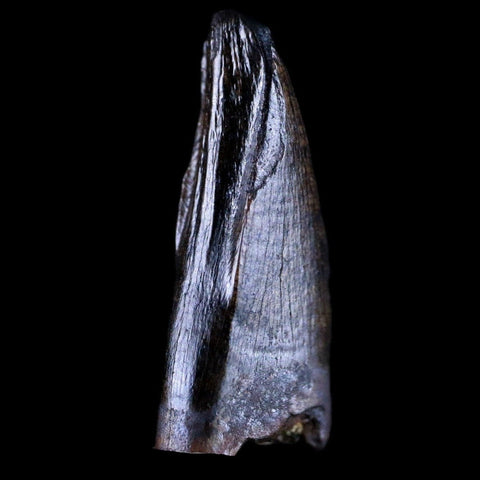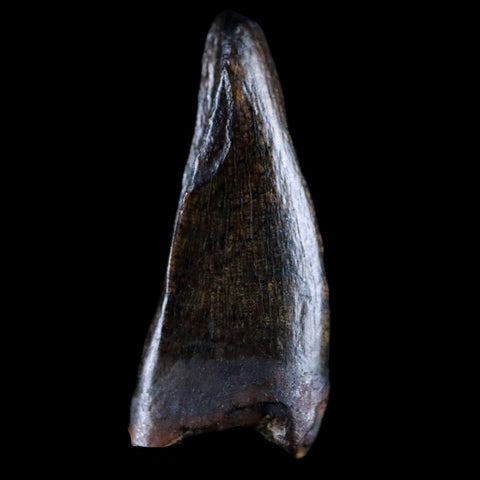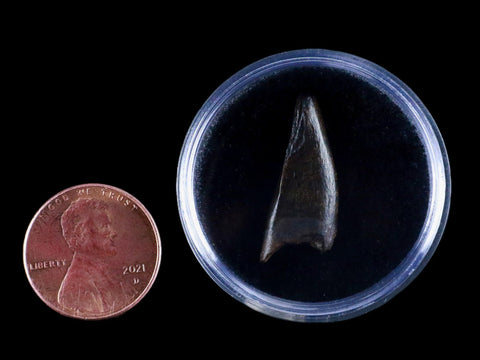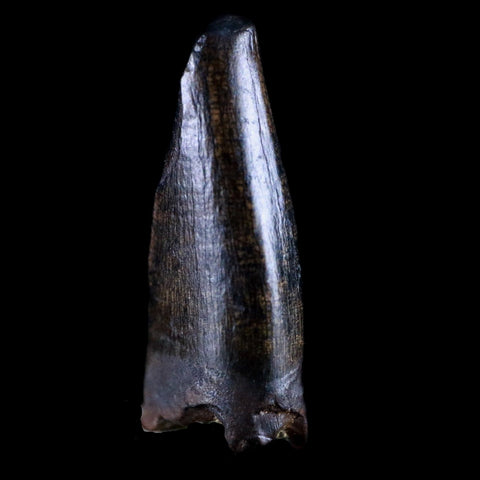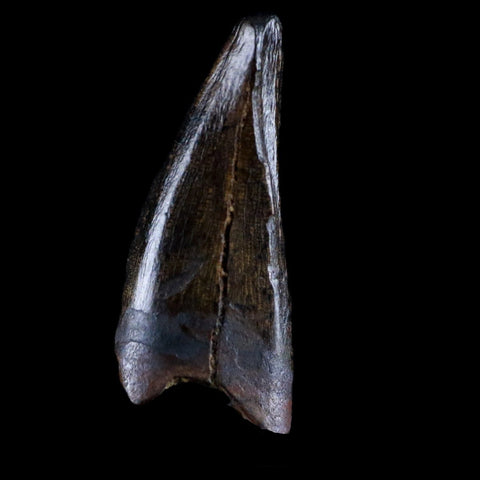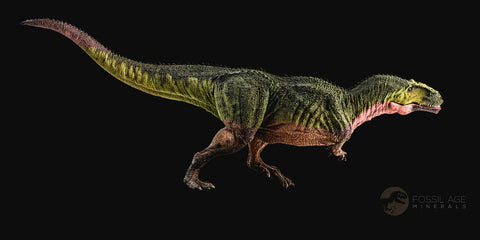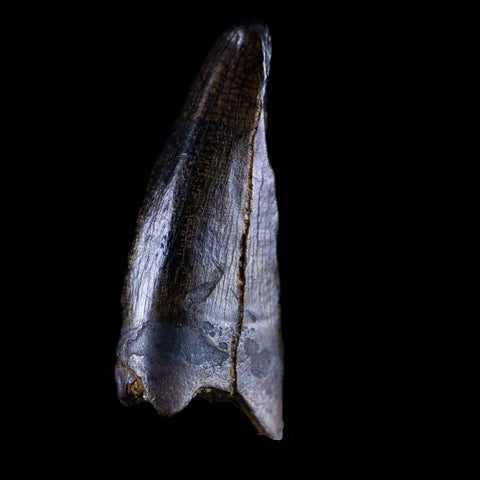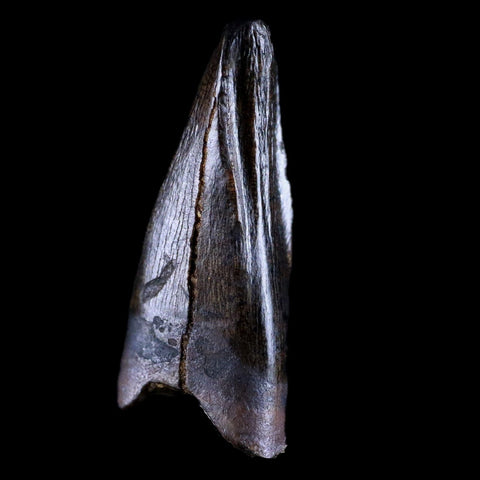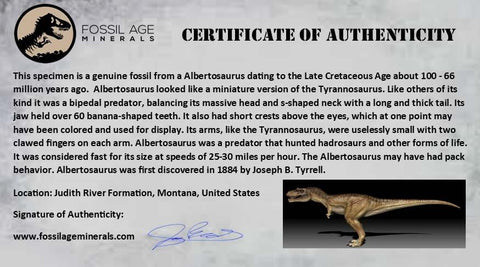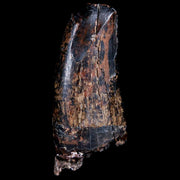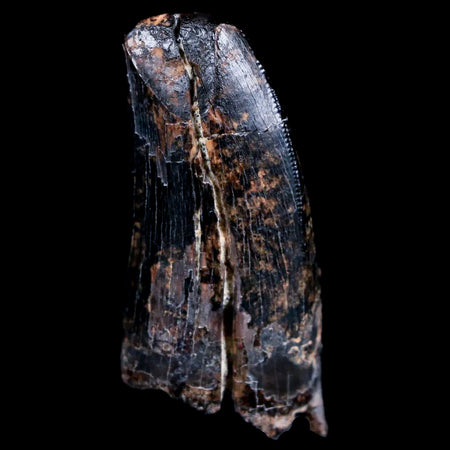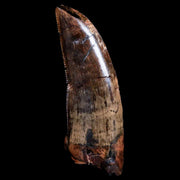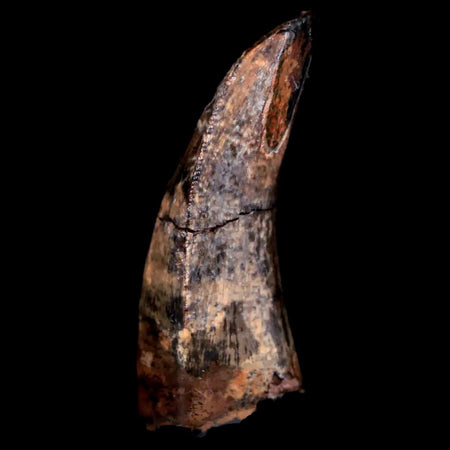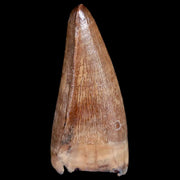1" Albertosaurus Fossil Juvenile Premax Tooth Tyrannosaur Cretaceous Dinosaur COA
Location: Judith River Formation, Montana (Private Land Origin)
Weight: 0.3 Ounces
Dimensions: 1 Inch Long, 0.4 Inches Wide, 0.2 Inches Thick
Comes with a free Display.
Comes with a Certificate of Authenticity.
The item pictured is the one you will receive.
This is a real fossil tooth, not a replica
Name: Albertosaurus (Alberta lizard).
Classification: Chordata, Reptilia, Dinosauria, Saurischia, Theropoda, Tyrannosauridae, Albertosaurinae.
Type: Carnivore.
Size: Large individuals grew to over 10 meters long.
Known locations: Canada. United States
Time period: Cretaceous Age 100 to 66 Million Years old
Albertosaurus was first discovered in 1884 by Joseph B. Tyrrell in the Horseshoe Canyon, of Alberta, Canada. At this point, it was classified as being part of a separate species. The Albertosaurus appears similar to Tyrannosaurids of its time including its sister fossil the Gorgosaurus. Henry Fairfield Osborn finally named it the Albertosaurus in 1905. The name was given in honor of the location of its first discovery in Alberta, Canada. Later a bonebed was discovered near the original discovery site in 1910. Nine specimens were uncovered in the bonebed.
Albertosaurus looked like a miniature version of the Tyrannosaurus. Like others of its kind, it was a bipedal predator, balancing its massive head and s-shaped neck with a long and thick tail. Its jaw held over 60 banana-shaped teeth. It also had short crests above the eyes, which at one point may have been colored and used for display. Its arms, like the Tyrannosaurus, were uselessly small with two clawed fingers on each arm.
Albertosaurus was a predator that hunted hadrosaurs and other forms of life. It was considered fast for its size at speeds of 25-30 miles per hour. The Albertosaurus may have had pack behavior. This is theorized due to the large concentration of Albertosaurus in the bonebed discovered in 1910. However, it is also possible that these dinosaurs were brought together for reasons of drought or flooding. While herbivores have been known to travel in herds this is more of a rare occurrence in dinosaur predators.




